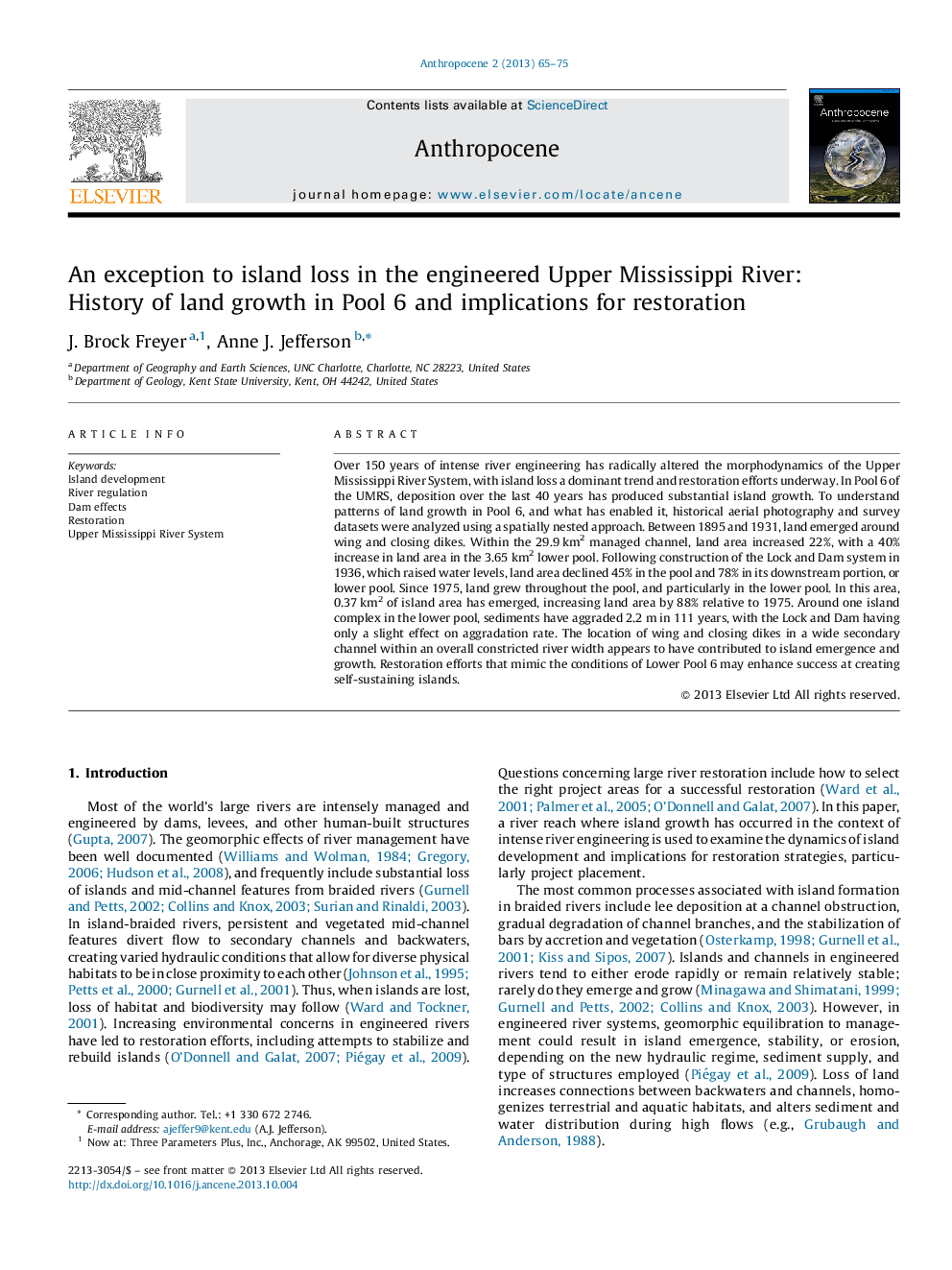| Article ID | Journal | Published Year | Pages | File Type |
|---|---|---|---|---|
| 4461932 | Anthropocene | 2013 | 11 Pages |
Over 150 years of intense river engineering has radically altered the morphodynamics of the Upper Mississippi River System, with island loss a dominant trend and restoration efforts underway. In Pool 6 of the UMRS, deposition over the last 40 years has produced substantial island growth. To understand patterns of land growth in Pool 6, and what has enabled it, historical aerial photography and survey datasets were analyzed using a spatially nested approach. Between 1895 and 1931, land emerged around wing and closing dikes. Within the 29.9 km2 managed channel, land area increased 22%, with a 40% increase in land area in the 3.65 km2 lower pool. Following construction of the Lock and Dam system in 1936, which raised water levels, land area declined 45% in the pool and 78% in its downstream portion, or lower pool. Since 1975, land grew throughout the pool, and particularly in the lower pool. In this area, 0.37 km2 of island area has emerged, increasing land area by 88% relative to 1975. Around one island complex in the lower pool, sediments have aggraded 2.2 m in 111 years, with the Lock and Dam having only a slight effect on aggradation rate. The location of wing and closing dikes in a wide secondary channel within an overall constricted river width appears to have contributed to island emergence and growth. Restoration efforts that mimic the conditions of Lower Pool 6 may enhance success at creating self-sustaining islands.
